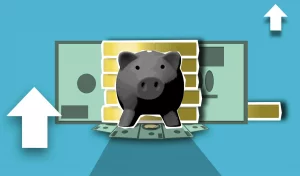Any thriving business starts with a blueprint that sets the tone and puts wheels in motion. Businesses don’t go from inception to jumping right into powering businesses with fast order fulfilment, or help our client grow 4x times, there is planning involved first. We are going to talk about creating a killer restaurant business plan today and discuss different steps to turn your business dreams into reality.
If you have never created a restaurant business plan before, we have outlined the basics in the following paragraphs. Else, you could scroll over to the later parts of this post to directly go through some of the advanced tips for restaurant business plans that people usually use these days.
By the way, there are plenty of free restaurant business plan templates available online. We recommend downloading a bunch of them after you have read this article. Doing so will give you leverage over many unsuspecting startup owners who usually go in blind without any formal knowledge whatsoever.
What Is a Restaurant Business Plan?
A formal document outlining the restaurant’s business goals, mission statement, executive summary, and foundation-level details are part of a restaurant’s business plan. This plan works as a roadmap with several short-term and long-term goals to help you achieve the final objective – i.e., having your restaurant up and running shortly.
Meanwhile, marketing and different business scalability strategies are not the primary part of a restaurant business plan. These ‘business expansion’ related elements are only part of a restaurant business plan because they tend to supplement the essence of the document. In other words, not having a highly detailed marketing plan in your restaurant business blueprint isn’t much of a big issue.
What’s The Ideal Length of a Restaurant Business Plan?
The length of the document isn’t something set in stone. It depends on the size and overall potential of your business. If you want to open a large-scale restaurant in a posh location for a particular audience, the document may span over 30 – 45 pages.
On top of that, if you are looking to open a restaurant under a partnership agreement, your restaurant business plan will potentially have lots of other details to highlight the terms and conditions of the partnership.
Additionally, if you are looking to secure external financial investments from a bank or some third party, the business plan will have a separate section to outline those details.
However, if something that’s unconditionally common in all sorts of restaurant business plans, it’s the executive summary, USPs (unique selling points), and the mission statement. Without these three elements, you can’t call it a restaurant business plan.
Avoid Making This Rookie Mistake When Creating a Restaurant Business Plan!
Whatever you do, please don’t create an executive summary before you finish with other parts of the restaurant business plan. Not making one is a beginner-level mistake.
If you create an executive summary for a business plan at the start or halfway through, you are doing yourself a disservice. The whole concept of an executive summary is to outline or summarize the entire document, and it is supposed to after you have covered all the basics.
Moving on, let’s talk about some of the best tips for creating a killer restaurant business plan.
Kickstart Your Business Story With a Restaurant Business Plan
We’ll talk about different parts of your restaurant business plan and how it affects the various branches of your business. Therefore, when all of these sections are combined, they make up for the business plan in its entirety.
You can also go over these sub-sections to get an idea of the overall summary of your vision. Feel free to make changes as you go along – because, after all, it’s your restaurant at the end of the day.
1. The Executive Summary
Although each restaurant business plan starts with an executive summary, it is the last thing you write. Ironically, the only piece of document in the early passages of the entire restaurant business plan is created in the end because it summarizes the overall essence of the project.
Executive summaries are at the beginning of the business plan because anyone who hasn’t read the document before can go through the first few pages to understand what the entire business plan entails.
That said, your restaurant’s executive summary has a lot of potentials to entice readers, interested business partners, and investors.
In your executive summary, you should aim for at least 500 – 600 words of details surrounding your unique selling point, mission statement, and funding source.
The summary is more of a hook with an intriguing effect to make the entire restaurant business plan a page-turner on its own.
2. Business Description
Next up, we’ll talk about the business description section of your restaurant business plan. The purpose of this section is to give your readers a high-level overview of the ideology behind your restaurant.
Is your restaurant a sole proprietorship or a partnership business? Describe some of the features that would be of interest to investors. Here are a few good examples to consider:
- What is the concept of your restaurant? Is it an establishment for families and kids with homely vibes, or is the ambiance leaning towards an entirely different theme?
- Write down anything that defines your cuisine type etc.
- Don’t forget to include a sample menu in the business description to explain the inspiration behind your food style.
- Detail the layout and design and other critical elements of the restaurant.
- Give details about the management and the ownership of your’ soon to be open’ restaurant.
Often, the business description section of a restaurant business plan can run dry. Ideally, the approach keeps it to the point with an out-of-box mentality. This way, you will end up retaining your readers’ attention instead of boring them to death.
3. Market & Competition Analysis
Perhaps one of the easiest and the most detailed part of the entire restaurant business plan is the market analysis.
It’s easy because you know what to do to get started. However, the more you delve into your competitor’s background, how they operate, their food style, theme, price points, etc., you’ll realize that there’s a lot more to it than what meets the eye.
- Market Need: Depending on your restaurant location, what’s your market’s need? What type of audience does your food attract? Here are some pointers to get you started in the right direction:
- Location: What’s the area of your restaurant, and why did you choose that location?
- Audience: Talk about your target audience, associated demographics, and psychographics.
- Describe different steps to position your restaurant business as compared to your competitors.
- Talk about direct and indirect competition after analyzing what others are doing in the same sphere around you.
4. Marketing Plan
All your marketing ideas and scalability strategies go into this section of the restaurant business plan.
Speaking of marketing, there’s a pre-marketing and post-marketing phase.
In the pre-marketing phase, you spread the word about your soon-to-be-opened restaurant by handing our flyers, business cards, etc. Doing so will create a preemptive effect where the audience will potentially be aware of your restaurant’s grand inauguration on a specific date.
Restaurants, at launch, offer discount codes and limited-time rewards to bank referral traffic.
The post-marketing section is where you engage your marketing team for their services. You can hire a PR team to collaborate with online influencers and vice versa.
5. Operations
The restaurant operations section highlights the schedule, staff details, and the nitty-gritty of your typical running day.
These details include:
- Your team size, their core responsibilities
- Restaurant schedule and business hours
- The type of technology you are going to use for online food orders, and local food orders
- What type of insurance does your restaurant have in case of any damages?
- License details, food and health codes, etc.
At The End of The Day
Writing down or referring to any restaurant business plan is a good move. That way, you have a sense of direction in your head. Plus, the overall process moves much faster since everything is mentioned in there already.
If you don’t have any prior experience setting up your restaurant for the first time, we’re here to help. Shoot us a message to get a full breakdown of how different types of restaurant technologies work, what are the do’s and don’ts of having your sole proprietorship food business – so on and so forth.
Get started with Blink by getting a Demo
Related Articles:
 How to Write a Restaurant Food Business Plan for Restaurants In a Post Pandemic Industry?
How to Write a Restaurant Food Business Plan for Restaurants In a Post Pandemic Industry?
 How restaurants should manage aggregators in 2023
How restaurants should manage aggregators in 2023
 Expert Tips on Creating a Balanced Menu for Your Restaurant
Expert Tips on Creating a Balanced Menu for Your Restaurant
 Top 8 Michelin Star Restaurants in Dubai You Can Order From
Top 8 Michelin Star Restaurants in Dubai You Can Order From
 How to Attract More Customers to Your Restaurant (*Updated 2023 Guide)
How to Attract More Customers to Your Restaurant (*Updated 2023 Guide)













